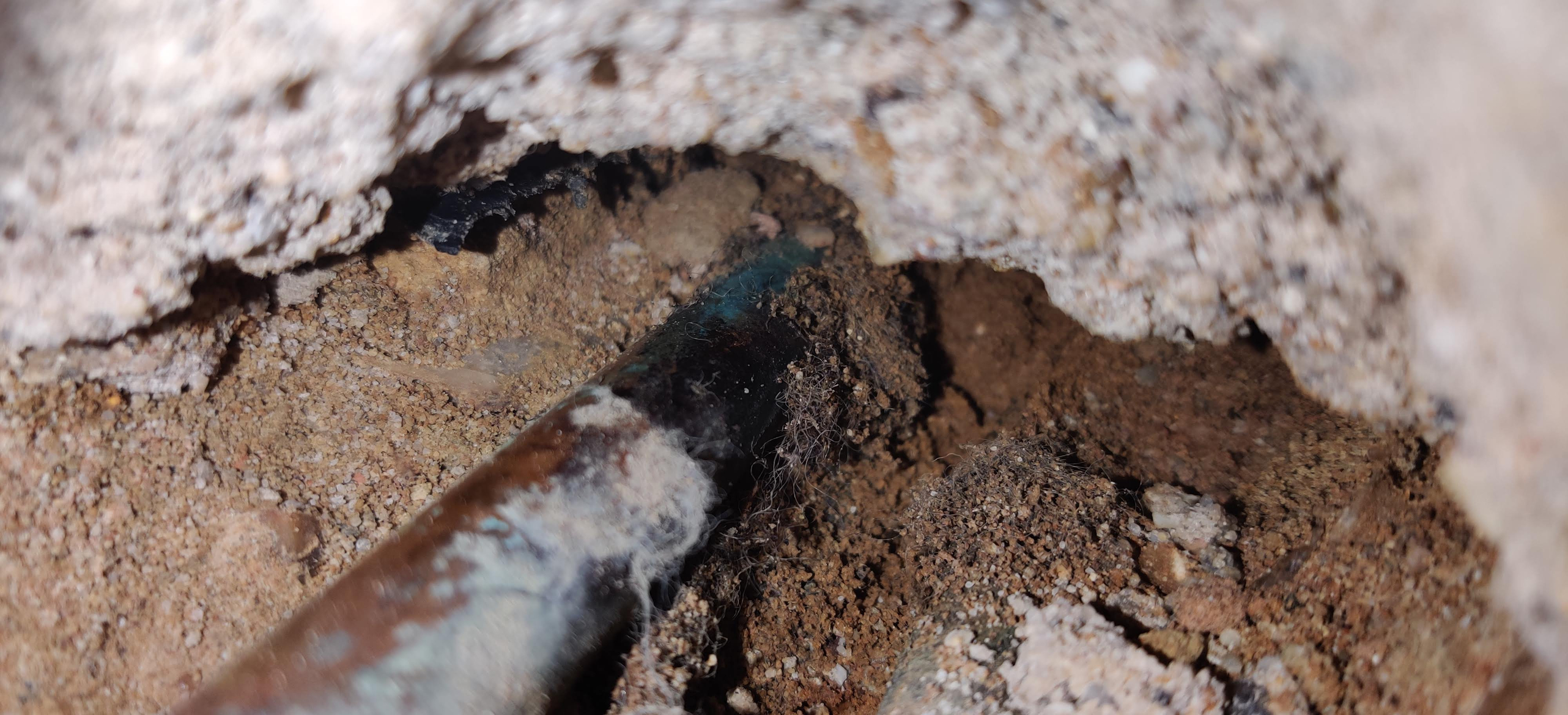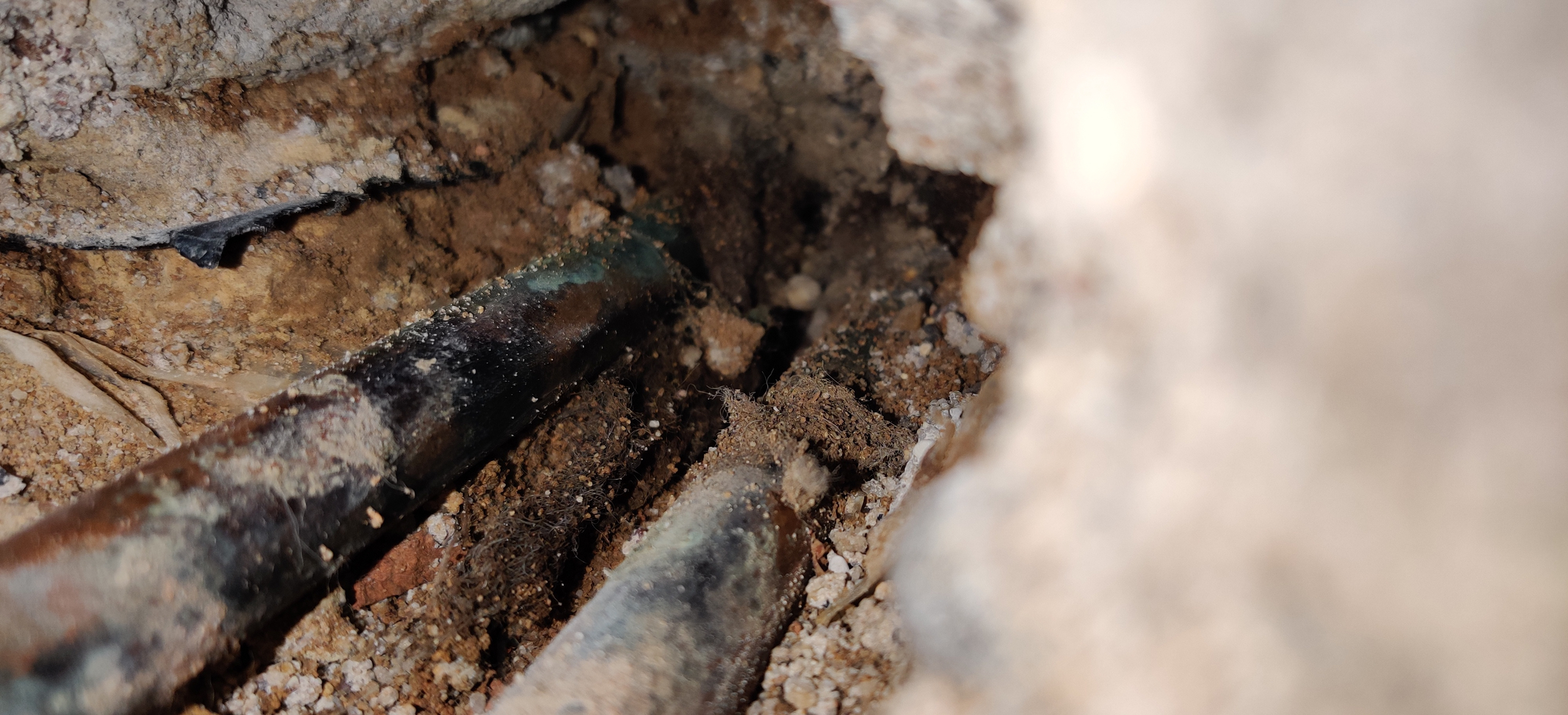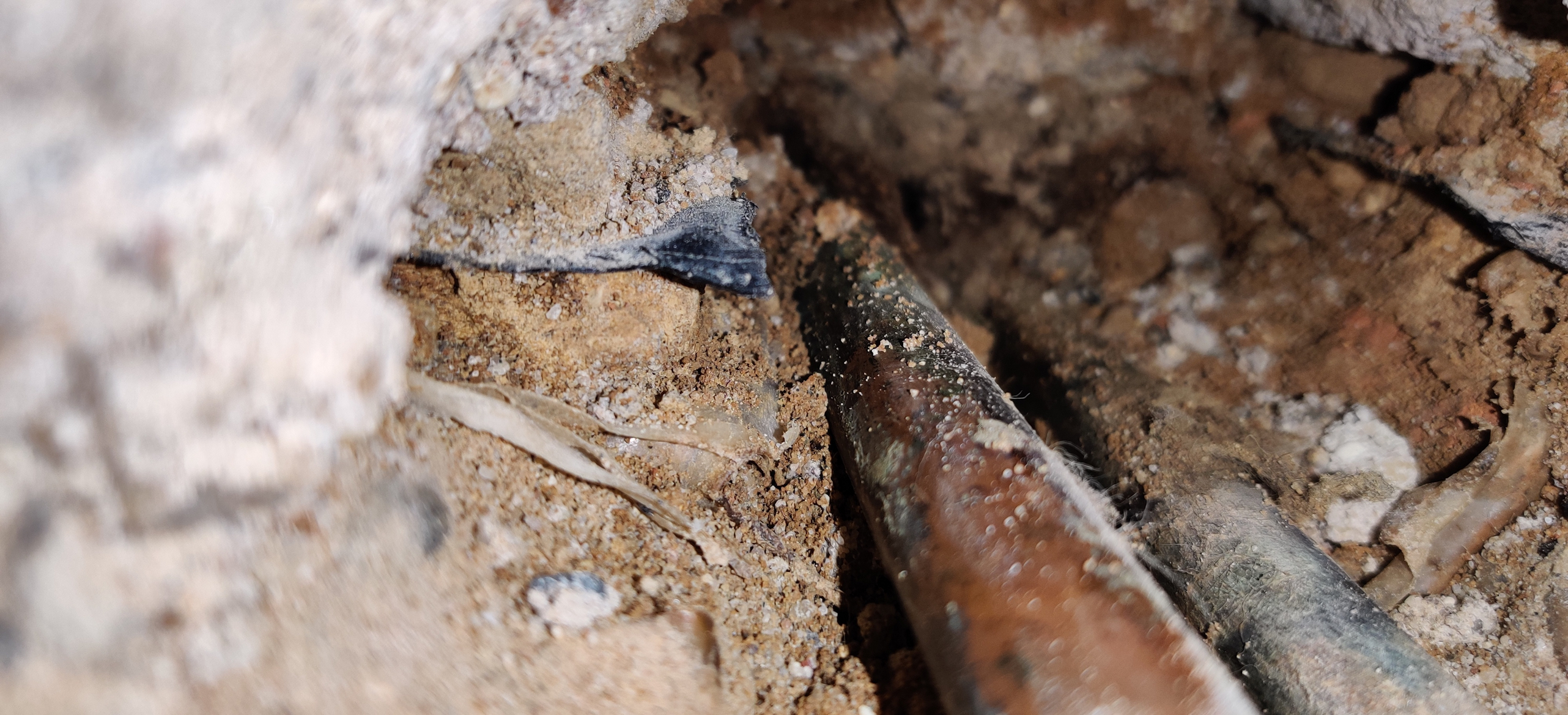We'd like to remind Forumites to please avoid political debate on the Forum... Read More »
We're aware that some users are experiencing technical issues which the team are working to resolve. See the Community Noticeboard for more info. Thank you for your patience.
📨 Have you signed up to the Forum's new Email Digest yet? Get a selection of trending threads sent straight to your inbox daily, weekly or monthly!
Wet floor under vinyl
Options
Comments
-
alibob22 said: I have taken some pictures from within the hole andhand highlighted what I think I felt the other day. All thoughts and ideas are greatly appreciatedWouldn't like to say for certain if that strip of black plastic is the original DPC or something that was put down when the pipes were installed. However, those images show some very damp material around the pipes and some corrosion of the copper pipes - I wouldn't be at all surprised is there are some holes in the pipes in that area.If you are digging up the pipes and plan on putting them back under the concrete, wrap them in pipe lagging - It will protect the copper from the cement and also provide a bit of thermal insulation.Her courage will change the world.
Treasure the moments that you have. Savour them for as long as you can for they will never come back again.0 -
Thanks for the comments I am going to run them from the floor above with drops hopefully take that pipe work out of the equation0
-
That is a better option in the long term. Much easier to get to the pipes should they ever spring a leak. Also gives you the opportunity to move radiators to a more convenient location - With modern (well insulated) houses, there is no need to site radiators under windows. So if you can arrange radiators back to back on internal walls, you'll save on the number of drops, pipework, and joints (reducing the potential for leaks).alibob22 said: Thanks for the comments I am going to run them from the floor above with drops hopefully take that pipe work out of the equation
Her courage will change the world.
Treasure the moments that you have. Savour them for as long as you can for they will never come back again.0 -
Ok thanks for the info. With all that information am I in a position to rule out rising damp?0
-
Yes absolutely you can rule out rising damp. Your house clearly has a physical DPC (looks to be a plastic membrane type), by virtue of this it is impossible for you to have rising damp. Contrary to what some unenlightened building contractors might say and what the vast majority of damp proofing contractors will have you believe, damp proof courses do not “break down”. There is absolutely no published evidence of this. Plastic is a very durable material and even if you had a huge break in your damp proof membrane, this does not automatically mean you will have rising damp. Rising damp is dependent on geological factors. I have surveyed houses without damp proof courses built pre 1875 (The year of the Public Health Act from which point damp proof courses became mandatory) and even in the absence of a DPC they were not suffering from the relatively rare phenomena known as rising damp. Added to the above, the photos you are showing and what you are describing is just not consistent with the features of true rising damp.0
-
Thanks for the update, So just to be clear this is only an internal wall and the picture through the hole where the plastic is ripped to lay the pipes under the concrete. I am unsure of how deep the pipes should be laid. I think the trouble is nobody can tell me what it is.OWsurveyors said:Yes absolutely you can rule out rising damp. Your house clearly has a physical DPC (looks to be a plastic membrane type), by virtue of this it is impossible for you to have rising damp. Contrary to what some unenlightened building contractors might say and what the vast majority of damp proofing contractors will have you believe, damp proof courses do not “break down”. There is absolutely no published evidence of this. Plastic is a very durable material and even if you had a huge break in your damp proof membrane, this does not automatically mean you will have rising damp. Rising damp is dependent on geological factors. I have surveyed houses without damp proof courses built pre 1875 (The year of the Public Health Act from which point damp proof courses became mandatory) and even in the absence of a DPC they were not suffering from the relatively rare phenomena known as rising damp. Added to the above, the photos you are showing and what you are describing is just not consistent with the features of true rising damp.
Could the fact that the material has been cut cause that much damp? What is the material under the pipes could that be the lowest point of the ground?0 -
If that “material” that has been cut is the original damp proof membrane then the answer is yes. It’s a bit difficult to be certain from just looking at these photos. Whether or not it is an internal wall is immaterial as it would still be served by the same damp proof membrane that has been noted from your previous photos of the external. There are quite a few variables that we are dealing with here so you would be better served by getting some professionals to visit. As we touched upon earlier in this thread, my recommendation would be an independent damp and timber specialist, Freebear recommends a decent builder. Either way you will need to get at least one or both of the aforementioned to make a visit as a full overview of the property is required in order to come to satisfactory conclusion which can only be achieved by a site visit.0
-
Hello all so the plumber came round and pressure tested the system and got to 2bar and the pipe started hissing exactly where it had been dug. And as water started to come out it took the same routes as when I pulled the vinyl up. I am getting the pipes rerouted but still concerned on that cut membrane and what to fill the hole back up with in case damp kicks in where that cut is. We took the skirting off which was mouldy and some of the paint came off. The plaster was damp as to be expected. But not sure of next steps insurance is paying for the damage but I want the repair to be good and water tight. I noticed under the screed there was a bitumen type layer. I am glad there was a leak but just have my doubts if the elements are not fixed when it is being reinstated.0
-
I have taken a few more pics from within the hole. You can now see where to ends of the material i guess we're meant to meet. As always any thoughts welcome.

 0
0 -
It looks to me that the installer of those pipes breached the damp course. The proper way would be to dig up that trench, remove the pipes then lay some DPM in the trench and add some bitumen compound where the new plastic sheet meets the old membrane to seal it off (I'd probably just lay sheet in the trench so it overlaps the old membrane course then fill with sand/cement).The water issue is 99% due to the leaking pipe due to erosion by the concrete. Pipes should have been wrapped in Denso tape. I'm not too bothered about insulating any heating pipes that are within the heated areas of a house as they only add to the energy that is being put into the room by the system, a bit like a small section of UFH.Signature on holiday for two weeks0
Confirm your email address to Create Threads and Reply

Categories
- All Categories
- 351K Banking & Borrowing
- 253.1K Reduce Debt & Boost Income
- 453.6K Spending & Discounts
- 244K Work, Benefits & Business
- 599K Mortgages, Homes & Bills
- 176.9K Life & Family
- 257.4K Travel & Transport
- 1.5M Hobbies & Leisure
- 16.1K Discuss & Feedback
- 37.6K Read-Only Boards






